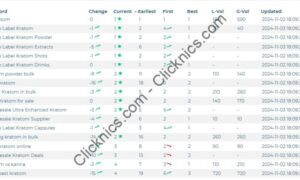Understanding key warehouse abbreviations is essential in today’s logistics industry. Every warehouse abbreviation used in the supply chain plays a role in improving efficiency, accuracy, and productivity. This article will explore the most important abbreviations you need to know.
Why Warehouse Abbreviations Matter
Each abbreviation used in a warehouse has a specific purpose. These codes help warehouse staff communicate efficiently. Whether it’s tracking stock or handling deliveries, knowing them is critical.
WMS – Warehouse Management System
WMS stands for Warehouse Management System. This abbreviation refers to the software that helps control and track inventory. A good WMS improves picking and packing accuracy.
SKU – Stock Keeping Unit
SKU stands for Stock Keeping Unit. It’s used to identify and track individual products. SKUs are unique to each product variation.
FIFO – First In, First Out
FIFO stands for First In, First Out. It is a method where older inventory is sold or used first. It helps prevent items from expiring.
LIFO – Last In, First Out
LIFO is the opposite of FIFO. Last In, First Out means the most recent inventory is used or shipped first. It’s useful in specific industries.
ASN – Advanced Shipping Notice
ASN means Advanced Shipping Notice. It informs warehouses about incoming deliveries. This helps prepare for receiving goods.
BOL – Bill of Lading
BOL stands for Bill of Lading. It’s a document that lists goods being shipped. Carriers use BOLs as proof of shipment and delivery terms.
RFID – Radio Frequency Identification
RFID is a technology used to track inventory. Radio Frequency Identification uses tags to send data. It reduces manual scanning.
3PL – Third-Party Logistics
3PL means Third-Party Logistics. Companies like DelGate are top-rated 3PL providers in Canada. They manage warehousing, shipping, and inventory control.
EDI – Electronic Data Interchange
EDI stands for Electronic Data Interchange. It allows the transfer of documents between systems. Warehouses use EDI for real-time updates.
MOQ – Minimum Order Quantity
MOQ stands for Minimum Order Quantity. It’s the smallest amount a supplier is willing to sell. Understanding MOQ helps with inventory planning.
ABC – Always Better Control
ABC categorizes products based on value and turnover. ‘A’ items are high-value, while ‘C’ are low-value. It helps optimize stock control.
ERP – Enterprise Resource Planning
ERP systems integrate all business processes, including warehouses. They offer real-time tracking of goods and data. ERP works with WMS to improve accuracy.
QC – Quality Control
QC refers to Quality Control. It ensures that goods meet standards before shipping. QC is a vital warehouse task.
DC – Distribution Center
DC stands for Distribution Center. It’s a warehouse that stores and ships products to retailers or customers. Many warehouses act as DCs.
JIT – Just in Time
JIT means Just in Time inventory. It minimizes stock by receiving goods only when needed. This method saves space and money.
PO – Purchase Order
PO stands for Purchase Order. It’s a document sent to suppliers for buying products. Warehouses use POs to track incoming goods.
KPI – Key Performance Indicator
KPIs help measure performance in a warehouse. These indicators include order accuracy and fulfillment speed. Tracking KPIs boosts efficiency.
Inventory Control Terms to Know
Understanding inventory terms helps warehouse teams perform better. Terms like SKU, FIFO, and MOQ directly affect warehouse decisions.
Labeling and Scanning Terms
Abbreviations such as RFID and EDI relate to product labeling. They reduce errors and improve processing times in busy warehouses.
Shipping and Receiving Abbreviations
BOL, ASN, and PO are vital shipping abbreviations. These ensure proper documentation and tracking. They reduce delays and mistakes.
Choosing the Right 3PL
A reliable 3PL like DelGate makes warehousing easier. This company handles all logistics services in Canada efficiently and reliably.
Conclusion
These key warehouse abbreviations are part of daily operations. Learning them improves communication and performance. Partnering with experts like DelGate guarantees top service in warehouse management.
FAQs
1. What does SKU stand for in warehouse terminology?
SKU stands for Stock Keeping Unit. It’s a unique code that helps identify individual items in a warehouse.
2. Why is WMS important in a warehouse?
WMS, or Warehouse Management System, improves inventory tracking and increases picking accuracy in warehouses.
3. What is the difference between FIFO and LIFO?
FIFO uses older inventory first, while LIFO uses newer stock first. The choice depends on the type of goods stored.
4. How does a 3PL like DelGate help with warehouse operations?
It offers complete warehouse services, from inventory management to shipping, making it the top 3PL in Canada.
5. What is the purpose of a Bill of Lading?
A Bill of Lading (BOL) confirms the shipment details and acts as a receipt between the shipper and the carrier.





























